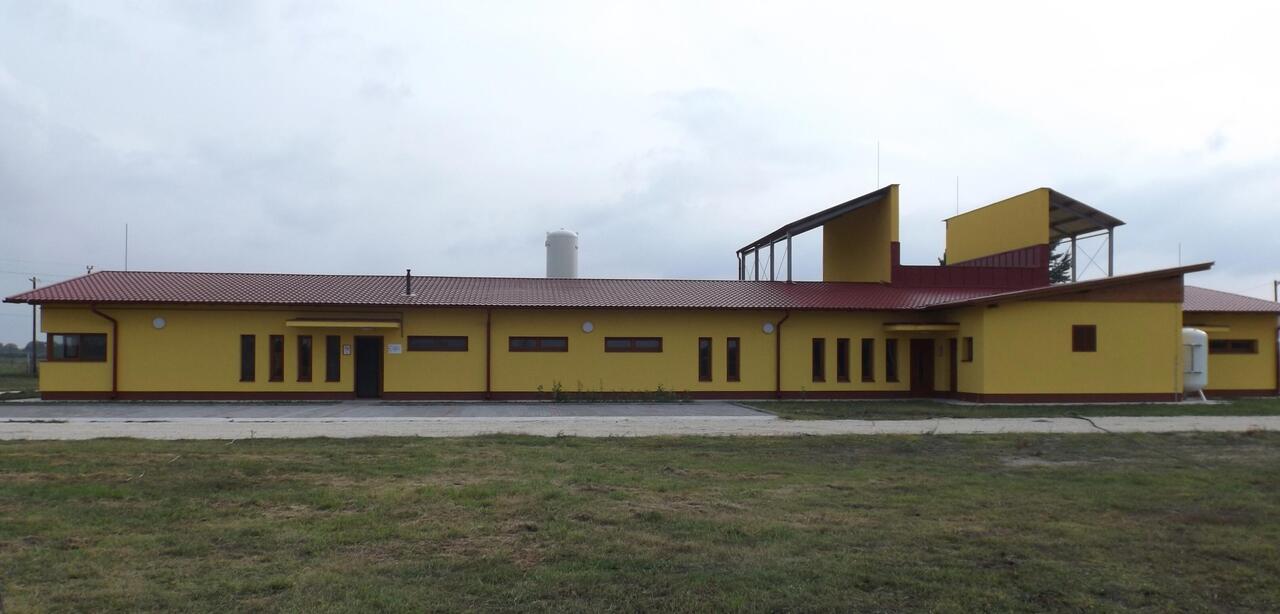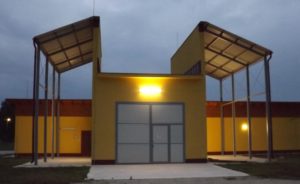A high pressure test station was established recently at Ma-Gumi Kft. The station has two aims:
- Research and development in the field of material performance in high pressure gas, among others rapid gas decompression, gas permeability at high pressure etc.
- Design verification testing of high pressure hoses and flexible pipes for the oil industry.

The facility is unique in Central Europe, by its complexity. A custom designed gas system allows mixing various gases, such as: methane, nitrogen, carbon dioxide and highly toxic hydrogen-sulfide in predetermined ratio, and compression to more than 1000 bar test pressure. A fire test station was established to test hoses under high internal pressure of 1000 bar or more in 700°C fire. The qualification tests are carried out according to the strict American Petroleum Institude standards, supervised by Det Norske Veritas. Close cooperation was established with ContiTech Rubber Industrial Kft. manufacturer of high pressure hoses and flexible pipes.
The operation started in April 2016.
The presentation will give details of the building and machinery, with special attention to work and environmental safety. It will also give a short overview of the tests Flexible Line Fire Test, Blistering Test, Exposure Test and Flexible Line High Temperature Exposure Test and Material Test possibilities.
Inside the building there is a low pressure compressor which is responsible for the right amount of low pressure air in the system. It also operates the pneumatic machinery located in the building.
 Outside, right next to the main building there is a high pressure container which allows the mixing of gases at high pressure. Before the beginning of the test it is able to mix methane, nitrogen, carbon dioxide and hydrogen-sulfide in the predetermined ratio required by the tests. Once the gas is mixed, it goes to the medium pressure compressor which pressurizes the gas up to 300 bar. If higher pressure is required the mixed gas goes to the high pressure compressor where it can achieve even the system’s 2000 bar top pressure. When the gas reaches the rated pressure it is pressed through the high pressure pipe lines into the 5 meter long and 1 meter diameter steel protecting tube where the test hose is located ready for the high pressure gas test. The protecting tube is designed to withstand high temperature and high pressure gas or water, should the pipe leak or burst during the tests. Inside the protecting tube there are various gas sensors to detect the gas in order to depressurize and stop the test in case of leakage. If that happens the closed automatic air fan switches on and lead the toxic gas to the neutralizer system.
Outside, right next to the main building there is a high pressure container which allows the mixing of gases at high pressure. Before the beginning of the test it is able to mix methane, nitrogen, carbon dioxide and hydrogen-sulfide in the predetermined ratio required by the tests. Once the gas is mixed, it goes to the medium pressure compressor which pressurizes the gas up to 300 bar. If higher pressure is required the mixed gas goes to the high pressure compressor where it can achieve even the system’s 2000 bar top pressure. When the gas reaches the rated pressure it is pressed through the high pressure pipe lines into the 5 meter long and 1 meter diameter steel protecting tube where the test hose is located ready for the high pressure gas test. The protecting tube is designed to withstand high temperature and high pressure gas or water, should the pipe leak or burst during the tests. Inside the protecting tube there are various gas sensors to detect the gas in order to depressurize and stop the test in case of leakage. If that happens the closed automatic air fan switches on and lead the toxic gas to the neutralizer system.
During the gas tests the protecting tube’s chamber is locked and cannot be approched. Pressure and temperature are continuously recorded on a digital chart recorder (Yokogawa) which can be operated on PCs in the PC room located next to the protecting tube test chamber. Since some tests requires continuous recording for months, there is a heavy-duty generator enough for the whole test station should a power faliure occure.
The protecting tube test chamber is basically designed for three kind of major tests: Full-scale Blistering Test (according to API 17K), Exposure Test (according to API 16C) and Flexible Line High Temperature Exposure Test (Survival Test, also according to API 16C), but suitable for other tests too.
